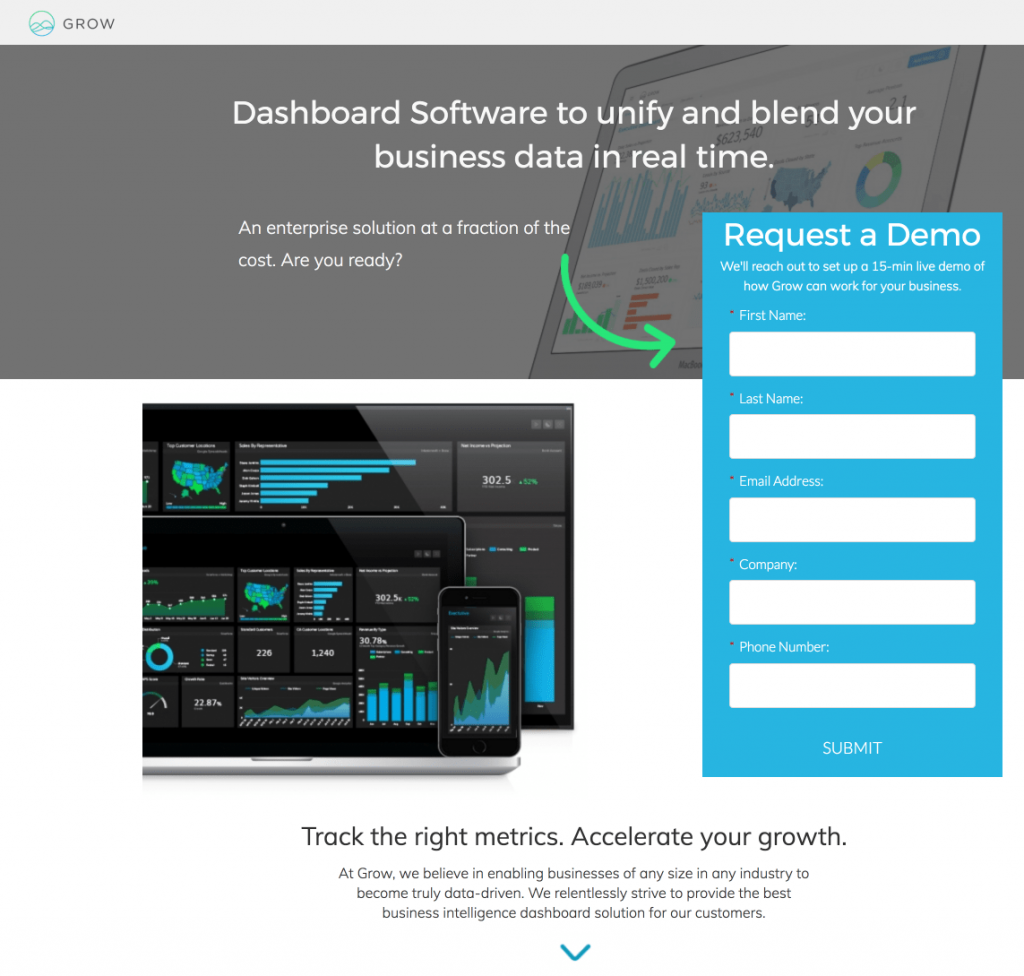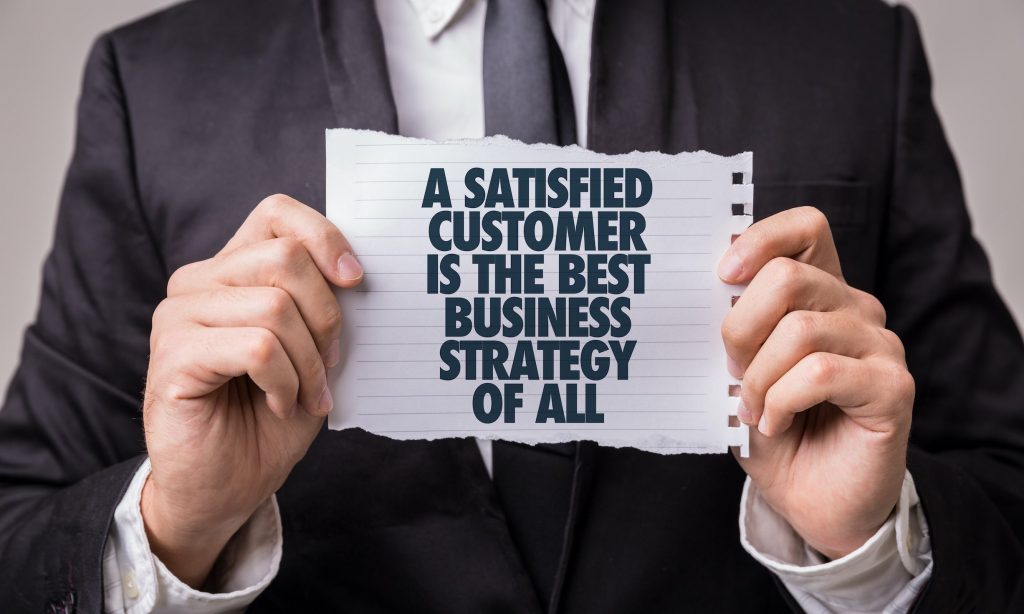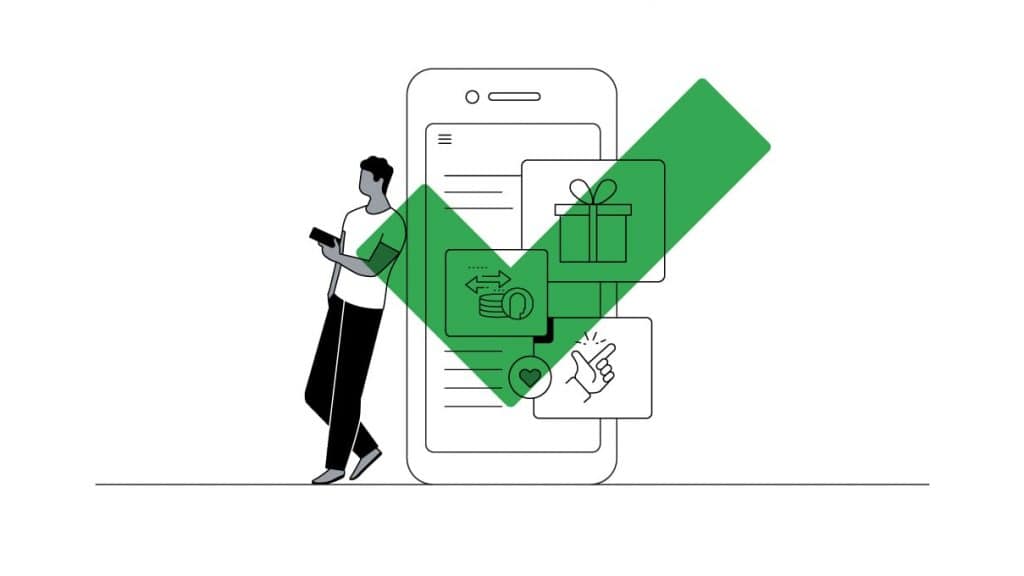The Value of Increasing Customer Inquiries
Generating more customer inquiries through your website provides tremendous value to your business. More inquiries mean more sales opportunities and potential revenue growth. But it also delivers other meaningful benefits:
Gaining Valuable Customer Insights
Every customer inquiry provides valuable insights. You learn more about customer needs, questions, objections or interests. These insights allow you to improve products, content, offers and overall customer experience. More inquiries from your site yield more customer intelligence to guide decisions.
Lowering Cost of Customer Acquisition
Increasing inquiries from your owned media channels (e.g. your website) reduces dependency on paid ads for customer acquisition. Every inquiry from your website reaches your sales team at a lower cost than generating that lead through paid search or social media ads.
Building an Asset That Keeps Providing Value
Your website provides lead generation value now and soon, significantly, as its content and authority improve. Unlike ad campaigns that expire, your site keeps working 24/7 to generate more inquiries over time. And as your customer base and email list grows, your site becomes an even more valuable asset.
Table of Contents
Key Components That Increase Online Inquiries

Some aspects of your website have an outsized impact on generating customer interest and initial inquiries. Keep these components top of mind:
Website Copywriting That Resonates
The copy and messaging throughout your site either attract more inquiries or it doesn’t. Specifically, the problem-agnostic content that speaks to customers during initial research drives top and mid-funnel inquiries. Is your content answering the right questions? Does it speak directly to customer needs using relatable terminology? These details make a big difference.
Clear Calls-to-Action Drive Action
Calls-to-action (CTAs) prompting visitors to take the next step are essential. And they must communicate the desired action clearly and persuasively. For example, “Request a Free Quote” works better than “Contact Us Today.” Strategically placing CTAs above the fold, in sidebars and on forms increases total clicks.
Reduce Friction Where Possible
Inquiry rates improve significantly by reducing friction wherever possible in the customer journey. Examples include auto-populating forms, minimising required fields, offering text/chat bots and simplifying navigation. If your site’s a maze with speed bumps throughout, expect fewer sign-ups, demos and quotes downloaded.
Engaging Content & Visuals Keep Visitors Around
Interesting and relevant content keeps visitors engaged. That means more pageviews and time on site – both predictors of higher inquiry rates and conversion. Also, visually compelling content in images, graphics, and videos improves conversion engagement metrics.
Increasing Customer Inquiries Through Specific Pages

Now, let’s explore tactics for increasing customer inquiries through targeted pages that matter most. These high-impact pages play an outsized role in capturing more queries.
Homepage CTAs Prompt Contact
Your homepage real estate is prime for spurring customer inquiries. This page deserves significant optimisation, especially calls-to-action above the fold. Urgency-inducing language also works well here, e.g. limited-time offers with expiration dates. Test math-driven copy tied to specific inquiry goals.
Also, re-engage site visitors who exit without contacting you by displaying customised homepage CTAs upon their return. For example, “Still have questions about X? Contact us for a free consultation.”
Optimise High-Traffic Landing Pages
Specific landing pages naturally attract more traffic due to targeting specific customer searches. For example, a “Pricing” page lands more visitors than a returns policy page.
Prioritise optimising conversion elements on these high-traffic pages before tackling lesser-visited sections of your site. Improving page speed, prominently displaying inquiry CTAs and using benefit-driven headlines on busy landing pages quickly lifts inquiries.
Overhaul Contact & Request Pages
The performance of these pages is hugely important, yet often gets overlooked. Best-practice tips for driving more sign-ups and downloads here include:
- Simplify the layout using clean backgrounds and enough white space
- Reduce required fields only to essentials
- Auto-populate known details like name & email
- Offer multiple contact options (web form, phone, live chat, etc.)
- Send real-time confirmation messages upon submission
Little enhancements make a world of difference. For example, if offering downloads, include tangible previews so visitors know what they’re getting before providing their contact information.
Feature Case Studies & Success Stories
Visitors need social proof and confidence before engaging. Case studies and customer success stories address visitor doubts and questions at critical points in their journey.
These peer stories help visitors imagine achieving similar results working with your company. Which means they’re more receptive to contacting you about getting started.
Strategically insert customer success elements on various pages – not just the Testimonials page:
- Homepage with logo slider
- Pricing and product pages quoting satisfied customers
- Service pages integrating client review videos
The strategic combination and placement of these elements significantly impact visitor conversions.
FAQ Pages Resolve Blockers Early
FAQ pages continue dispelling visitor doubts and answering questions without direct 1:1 interaction. These pages tackle common inquiries from every angle, minimising objections before they become dealbreakers.
The right FAQ page also tells visitors what to expect if they engage further, reducing uncertainty about the next steps.
Optimise FAQ layout and content by:
- Answering questions from beginner to advanced levels
- Inserting visual cues like plus icons for expanding answers
- Including an inquiry form within the page for any unresolved questions
Tactics To Grow Inquiries From Existing Traffic

You don’t necessarily need more visitors to increase customer inquiries. You can generate more signups and contact requests from existing traffic levels by:
Activating the 80/20 With On-Site Retargeting
Most customer activity online comes from a minority share of site visitors. 20% of visitors drive about 80% of conversions for a typical site.
Activate this 80/20 rule with on-site retargeting using pop-ups and displays. Customise messaging is shown to repeat visitors who haven’t yet contacted you. For example, ask return visitors about challenges they’re still facing or if they need any additional information.
Appealing to these already familiar visitors provides another chance to capture their interest before they leave again.
Wowing Visitors With Live Chat
Live chat turbo charges inquiry rates as visitors get questions resolved in real-time. One study found adding live chat lifts conversion rates by 20%, while another revealed a 40% increase.
The customer care element also leaves visitors with positive impressions. Over 80% in one poll said live chat gave them more confidence to make purchases or sign up.
Other live chat benefits include:
- Continuously collecting visitor data and behaviour insights
- Uncovering common questions for creating new FAQs
- Enabling proactive pop-up messages addressing visitor-specific needs
With strategic implementation, live chat delivers a monster inquiry lift.
Motivating Visitors Through Urgency
Urgency captures more inquiries by priming visitor actions based on scarcity. Common urgency examples include:
- Limited-time sales or special offers
- There are few remaining seats for an event
- Small-batch product releases
Urgency statements like “Just three days left for 20% off” spark visitor actions. The anticipated regret of missing out often provides the final motivation to engage now.
Studies also show adding urgency sometimes boosts conversions by over 100%.
When using this technique, set actual expiration dates and honour the promotions advertised at their conclusion.
Optimising Site Search To Increase Relevant Inquiries

Visitors leveraging your site search demonstrate clear buyer intent. You know exactly what content they’re looking for at that moment.
Therefore, fine-tuning searches to serve relevant pages promptly helps capture more “hot” inquiries from interested visitors.
Tips for better search optimisation include:
Enhance Keyword Targeting
Identify high-value searcher keywords driving relevant traffic. Expand your FAQs, product descriptions and page content around these terms. Ranking well for prime customer keywords leads to more on-target inquiries.
Improve Autocomplete Suggestions
Autocomplete, generating suggested search terms as visitors type, reduces keystrokes and aids search success.
Confirm your autocomplete results closely match high-value searcher keywords. Review analytics, if available, to identify and recommend relevant keywords in real-time searches.
Insert Quick Contact Option
Some searchers need additional guidance if they need help finding answers. Include a simple contact form/live chat icon on the search results page. This reduces exit rates from unsuccessful searches and provides a channel to capture direct inquiries immediately.
Use Site Search As Subscriber Qualification
Compile searches that indicate buyer readiness. Then, customise follow-up messages to these site visitors about your services, discounts or resources.
For example, someone searching for pricing could be served an automated email with offers to connect directly regarding quotes or estimated costs tailored to their needs.
Optimising For Mobile Increases On-The-Go Inquiries

With over 60% of website traffic originating from smartphones, a mobile optimisation strategy is essential for maximising inquiries.
Elements to prioritise for better mobile performance include:
Accelerated Mobile Pages
Google’s AMP technology requires developers to follow performance best practices for fast-loading pages. AMP rewards compliant sites with prominent placement in mobile search.
Faster load speeds improve visitor experience, critical for keeping visitors engaged long enough to drive inquiries.
Adjusting CTAs For Fat Fingers
Testing shows mobile CTAs receive an average of 15% lower clickthrough rates, partly due to smaller screen sizes. Adjust call-to-action size appropriately to allow accurate tapping.
Also, ensure CTAs stand out with sufficient colour contrast from other elements that could overlap in responsive designs. You want them easily tappable throughout the site.
One-Click Calls Connect Quickly
Click-to-call buttons decrease friction for mobile visitors interested in talking immediately with sales. According to studies, this quick contact method lifts mobile call conversions by 5X, with even higher premiums possible for services involving appointments.
Position click-to-call buttons prominently within site navigation and content pages optimised for mobile.
On-Page Lead Gen Forms
On-page forms visible above the fold capture more inquiries from engaged mobile visitors. This allows acting while interested instead of navigating across menus and pages to find contact forms.
If deploying forms, allow phone number-only entries and more complex email/name inputs. This further reduces mobile friction with a quick contact channel.
Critical Metrics Tracking Inquiry Performance

Analysing metrics around visitor behaviours and acquisition channels informs better decisions for lifting inquiries. Specific KPIs to monitor include:
Site Exit Rate
The site exit rate reveals processes losing visitor interest quickly. Review pages and visitor fallout points with the highest exit rates first. What made them leave, and how can you retain them longer to increase engagement?
Visitor Recency/Frequency
These metrics expose how often new vs repeat visitors come to your site, along with frequency patterns. Infrequent visitor return cycles indicate opportunities to re-engage cold traffic through remarketing.
Channel Source/Medium
Tracking the sources driving inquiries helps double down on the highest-performing channels. If organic search converts visitors best right now, create more content and optimise to extend that channel’s lead generation dominance.
Form Completion Rates
Low-form completion signals visitor drop-off. Shorten forms by removing unnecessary fields. Also, analyse the specific points causing exits like forced account sign-ups or complex address inputs only needed from paying customers.
Contact-to-Customer % Rate
What portion of completed inquiry contacts convert to closed customers? Improving messaging and follow-up processes after initial interest directly impacts customer acquisition results.
Conclusion
Generating more qualified inquiries from your website delivers outsized business value in capturing customer opportunities today and building owned media assets working 24/7 at lower costs over the long term.
Tactics around engaging copy, friction reduction, conversion optimisation, site search refinements, mobile adjustments, and metrics monitoring help increase interest and contacts from your existing traffic.
A double-digit lift in yearly customer sign-ups, demos and quote requests is achievable with a comprehensive implementation approach built around aligning site experiences with the inquiries buyers seek.
Now, turn these website visitors into valuable customer conversations that propel your company goals.
FAQs
What are the most important website elements to optimise for generating inquiries?
The most important elements are your CTAs, high-traffic landing pages, contact/request pages, customer case studies and FAQ content. Pay special attention to crafting persuasive CTAs with clear messaging, prominently displaying them site-wide. Reduce visitor friction on contact forms for easy submission. Feature credible customer results and tell their stories throughout your content, especially on priority pages where visitors need confidence before engaging. Develop comprehensive FAQs that tackle all aspects of visitors' questions, reluctance and concerns.
How can my brand best leverage live chat to capture more inquiries?
Strategically position the live chat prompt in high-visibility areas near existing CTAs
Set rules to auto-activate chat windows after 30 seconds of page inactivity.
Develop proactive chat sequences addressing visitor behaviours and site sections, then make personalised recommendations.
Let visitors submit inquiries directly in the chat instead of using complex contact forms.
Install visitor listening technology identifying common questions to inform new FAQ content.
What’s an example urgency strategy to motivate more inquiries?
One proven example is promoting limited-time flash sales on specific products/services targeted at in-market site visitors. You could advertise a 1-day-only 25% discount on new customer contracts, available to the first ten sign-ups received before midnight with the countdown displayed. The anticipated regret of missing this special deal creates urgency for the buyer to act by contacting your sales reps or submitting the online inquiry form to claim the offer before it expires that same day. Remember to make good on these limited promotions when their duration ends.
How often should I review site metrics to assess inquiry performance?
Checking key website metrics on at least a weekly basis allows responding quickly enough to spot changing patterns. Daily monitoring for certain fast-changing factors like exit pages and funnel fallout points is ideal, but overall, broader trends can be tracked effectively each week. Set aside 30 minutes every Monday morning to review the latest data on traffic channels, visitor behaviours, form metrics, inquiry volumes, contact-to-customer conversions and other KPIs driving your customer acquisition efforts. From there, action plans can be created against red flags while optimising high-performing areas.
What’s the first step to increase site inquiries from existing traffic levels?
The first step would be implementing on-site retargeting focused on repeat visitors who have yet to contact you. Set up customised messaging shown to these site visitors who have returned but have yet to be engaged further. For example, display a user-specific promo for returning visitors offering “20% off your first order” or a unique content upgrade available just for them. Appealing to this already familiar traffic with extra incentives provides another chance to secure their inquiry before they leave your site again. From there, assess other optimisation opportunities, but that quick retargeting win should come first.
